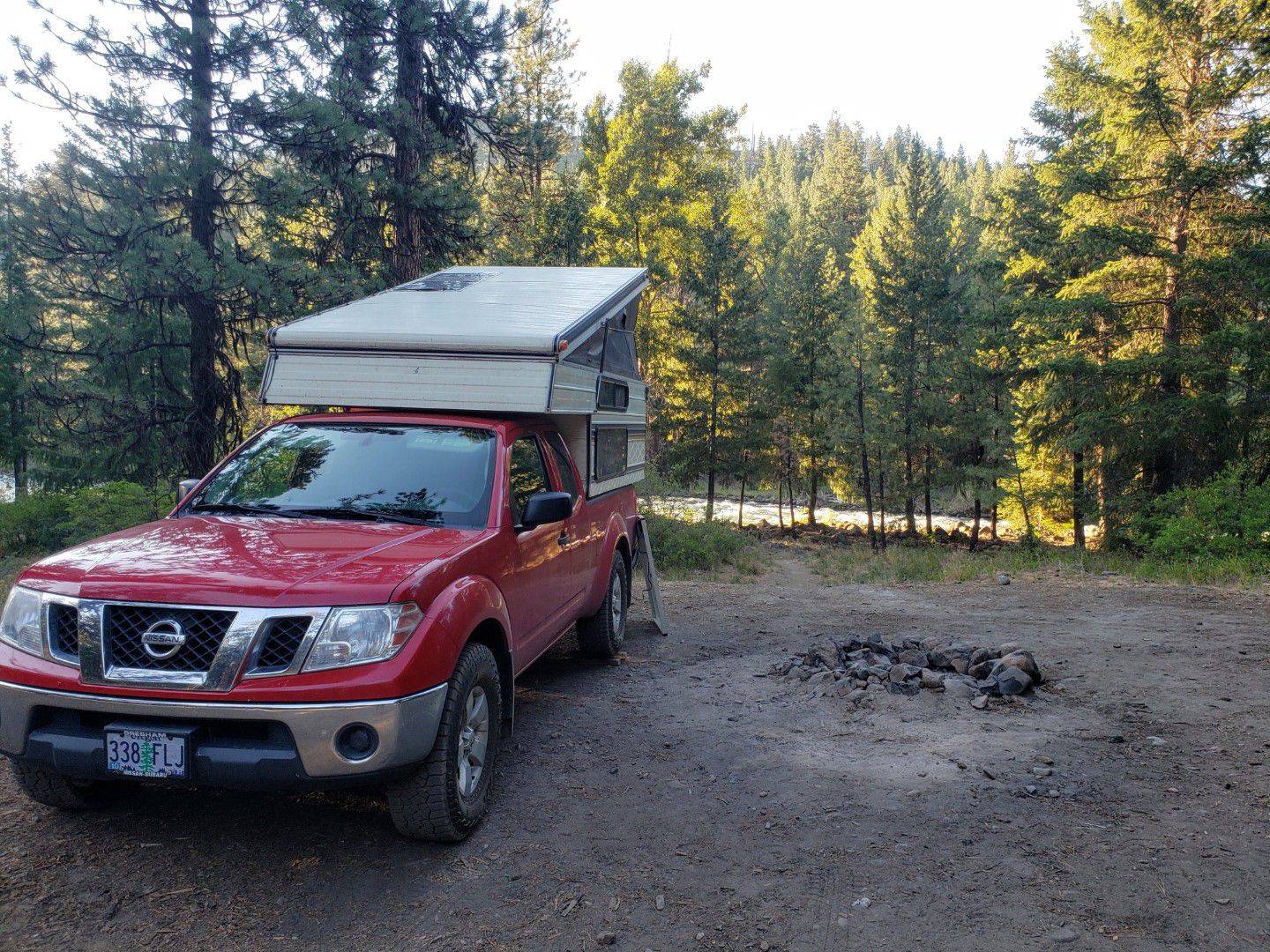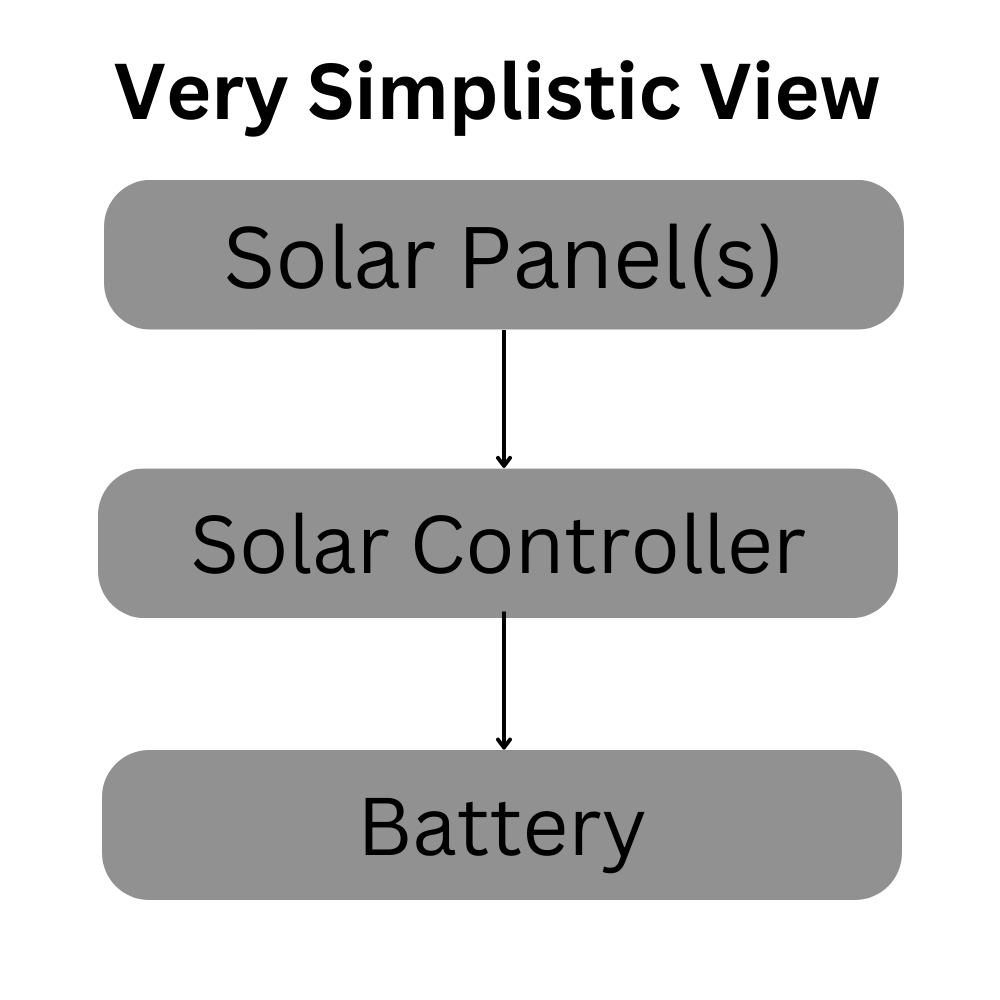

Solar Power for Overlanding:
How to Power Your Adventures Off the Grid
Solar Power is a reliable and sustainable source of energy.
Solar power has been gaining popularity among overlanders in recent years. Overlanding is a form of off-road adventure travel that involves exploring remote locations and camping in the wilderness. It requires a lot of power to run various devices such as refrigerators, lights, and communication equipment. Solar power provides a convenient and cost-effective way to generate electricity while on the road.


Sign up for the best off-grid solar info!
Overlanding solar systems allow for clean, renewable energy that doesn’t require fuel. While gas generators can provide more power, they are bulky and much louder and annoying to use than solar power systems. The right combination of solar power equipment depends on the specific needs and preferences of the power needs.
Read More
My Current Setup
Currently I have a flexible solar panel on the roof of my camper, and a 115-watt solar panel as a secondary source if I’m going to be staying and working off-grid. I’ve also used portable solar panels like Zamp Solar that need to be set up and connected each time.
I’m not a big fan of any flexible solar panels that are not CIGS panels. The mono or polycrystaline solar panels marketed as flexible fail way too early. This flexible was given to me and within the year the power output depleted significantly.
I also have a battery charger that I connect to my DC output of my truck that puts a little power into my lithium battery. it’s so far a great setup. Lightweight and simple.
Overview of Solar Power for Overlanding
Solar power is popular among overlanders as it allows them to generate electricity from the sun, enabling them to power their devices and appliances while on the go. Solar power is portable and can be easily mounted on a vehicle or set up on the ground. It’s also renewable, making it sustainable and eco-friendly.


Here is a VERY SIMPLISTIC view of the key components for solar power in overlanding system. The base system include solar panel(s), a charge controller, and battery(s).
An inverter can also be used to power household devices but I don’t know many overlanders that carry many 120-volt devices.
Overlanders have several options for solar panels, including flexible, rigid, and portable panels. The size and number of panels needed depend on the required power and available mounting space.
Investing in a high-quality solar power system provides overlanders with a reliable and sustainable power source for their adventures off the grid. It allows them to enjoy the freedom and flexibility of traveling without relying on traditional power sources.
Benefits of Using Solar Power for Overlanding
Overlanding is all about exploring the great outdoors and living off the grid. It’s a unique way of traveling that requires a reliable source of power to keep your devices charged and your lights on. That’s why many overlanders are turning to solar power as a sustainable and efficient way to power their adventures.
One of the biggest benefits of using solar power for overlanding is its portability. Solar systems are lightweight and can be easily mounted on the roof of your vehicle or on a portable stand. This means you can take them with you wherever you go and even set them up in minutes if it’s not already deployed. Plus, solar panels don’t require any fuel, which means you won’t have to worry about running out of gas or finding a gas station in the middle of nowhere.
Another advantage of using solar power for overlanding is its low maintenance. Solar panels have no moving parts, which means they require very little maintenance. Once you’ve installed your solar panels, you can forget about them and let them do their job. Plus, solar panels have a long lifespan, which means you won’t have to replace them anytime soon.
Solar power is also a clean and renewable source of energy. Unlike gas generators, solar power doesn’t produce any harmful emissions or noise pollution. This means you can enjoy the peace and quiet of the great outdoors without disturbing the environment or your fellow campers. Plus, solar power is free, which means you won’t have to spend any money on fuel or maintenance.
Finally, solar power is a reliable source of energy. As long as the sun is shining, you’ll have power. Solar panels can even generate power on cloudy days, although the output will be lower. This means you won’t have to worry about power outages or running out of battery power when you need it most.
Types of Solar Panels and Systems for Overlanding
When it comes to choosing the right solar panel for overlanding, there are a few different types to consider. The most common types of solar panels are:
- Monocrystalline – These panels are made using a single cut of pure silicone, making them the most efficient type of panel. However, they are also the most expensive.
- Polycrystalline – Polycrystalline panels, or multi-crystalline panels, are made with additives into the silicone. They are a cheaper option but also have a lower efficiency/performance compared to monocrystalline panels.
- Thin-Film – These panels are made using a thin layer of photovoltaic material on a substrate. They are lightweight and flexible, making them a good option for curved surfaces, but they are also less efficient than monocrystalline and polycrystalline panels.
When it comes to choosing the right solar system for overlanding, there are two main types to consider:
- Portable Solar Systems – These systems are designed to be easily transported and set up at your campsite. They typically include a solar panel, charge controller, and battery, and can be used to power small devices or appliances.
- Fixed Solar Systems – These systems are permanently installed on your vehicle and typically include multiple solar panels, a charge controller, and a larger battery bank. They can provide enough power to run larger appliances like a fridge or air conditioner.
When choosing between a portable or fixed solar system, it’s important to consider your power needs and how much space you have available on your vehicle. Portable systems are a good option for those who only need to power a few devices, while fixed systems are better suited for those who need more power and have the space to install multiple solar panels.
How to Choose the Right Solar System for Your Overlanding Needs
When it comes to choosing the right solar system for your overlanding needs, there are a few key factors to consider. One of the most important considerations is your power needs. You will need to determine how much power you need based on your electrical usage, including devices and appliances you will be using while overlanding. This will help you determine the size and number of batteries and solar panels you will need to power your adventures.
Another factor to consider is the amount of space you have available for your solar system. If you have limited space on your vehicle, you may need to opt for smaller, more compact solar panels that can be easily mounted or carried. On the other hand, if you have more space available, you may want to invest in larger, more powerful solar panels that can generate more energy and power more devices.
It’s also important to consider whether you will be charging your batteries off the motor while driving. If so, you may be able to get by with a smaller solar system. However, if you plan on relying solely on solar power, you will need a larger system to ensure that you have enough power to meet your needs.
Maintenance and Troubleshooting of Solar Systems for Overlanding
Maintaining a solar system for overlanding is relatively easy and straightforward. However, like any other system, it requires regular maintenance to ensure that it performs optimally.
The first step in maintaining a solar system is to keep the solar panels clean. Dirt, dust, and debris can reduce the amount of sunlight that reaches the panels, reducing their efficiency. Cleaning the panels once every few months with a soft cloth and mild detergent can help keep them clean and functioning correctly.
Another essential aspect of maintaining a solar system is to check the wiring and connections regularly. Loose or damaged wiring can lead to a drop in power output or even a complete system failure. Checking the wiring and connections every six months and tightening any loose connections can prevent these issues from occurring.
It is also crucial to keep an eye on the battery voltage levels. Overcharging or undercharging the battery can significantly reduce its lifespan. Checking the battery voltage levels regularly and adjusting the charge controller settings accordingly can help prevent these issues.
If a problem does occur with the solar system, troubleshooting the issue can be relatively simple. The first step is to check the wiring and connections for any loose or damaged components. If the wiring and connections are in good condition, the next step is to check the charge controller and battery voltage levels. If the voltage levels are too high or too low, adjusting the charge controller settings can help resolve the issue.
More information and resources to come…
We’re working on bringing you more information regarding solar power for overlanding, it just takes a bit of time. If you have any topics you’d like to see covered please just reach out.
